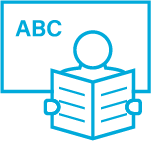


The main finding of the present study was that cognitive skills predicted reading comprehension mainly indirectly via listening comprehension and reading fluency in grade 1.
Authors: Minna Torppa, George K. Georgiou, Marja-Kristiina Lerkkanen, Pekka Niemi, Anna-Maija Poikkeus, & Jari-Erik Nurmi
Source: Torppa M., Georgiou, G. K., Lerkkanen, M-K., Niemi, P., Poikkeus, A-M., & Nurmi, J-E. (2016). Examining the Simple View of Reading in a Transparent Orthography: A Longitudinal Study from Kindergarten to Grade 3. Merrill-Palmer Quarterly, 62(2), 179–206. https://muse.jhu.edu/article/621824
In this study, the dynamic relationships between components of the simple view of reading (SVR) were examined in a transparent orthography, together with the predictive value of cognitive skills (phonological awareness, letter knowledge, rapid naming, and vocabulary) on SVR components. Cognitive skills predicted reading comprehension mainly indirectly via listening comprehension and reading fluency in grade 1.
What are phonological awareness and letter knowledge?
What is rapid naming?

The study
In this study, the aim was to extend previous studies by including pre-literacy skills as predictors of SVR components.
Research questions:
Participants were 1815 kindergarten-aged children and their teachers from three medium-sized towns and one municipality in Finland. Compulsory education begins in the year of the child’s seventh birthday in Finland. Approximately 98% of all Finnish 6-year-olds attend kindergarten education. Student gains in reading are encouraged by the availability of high-interest texts at multiple levels and by giving students the freedom to choose reading materials.

Findings

Implications